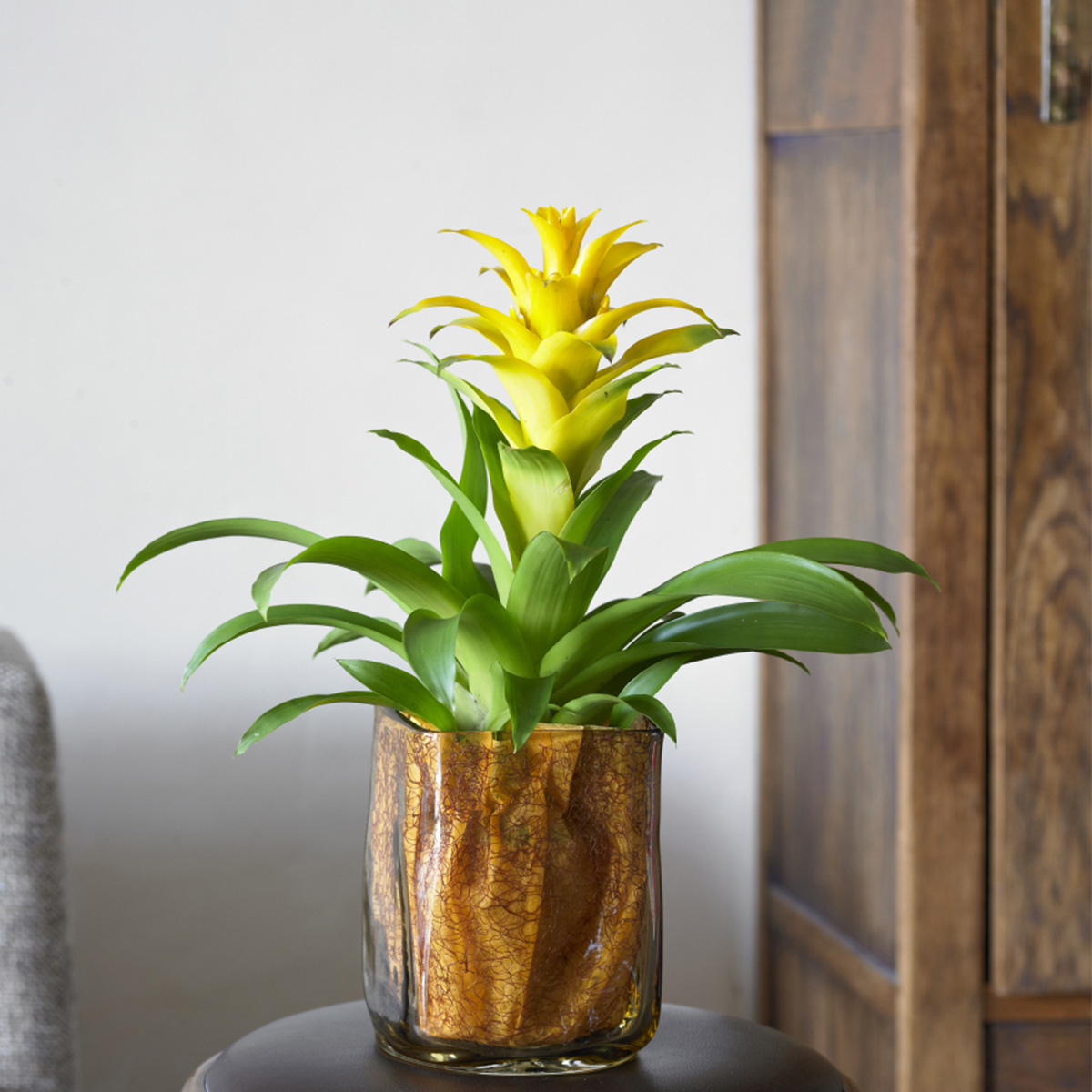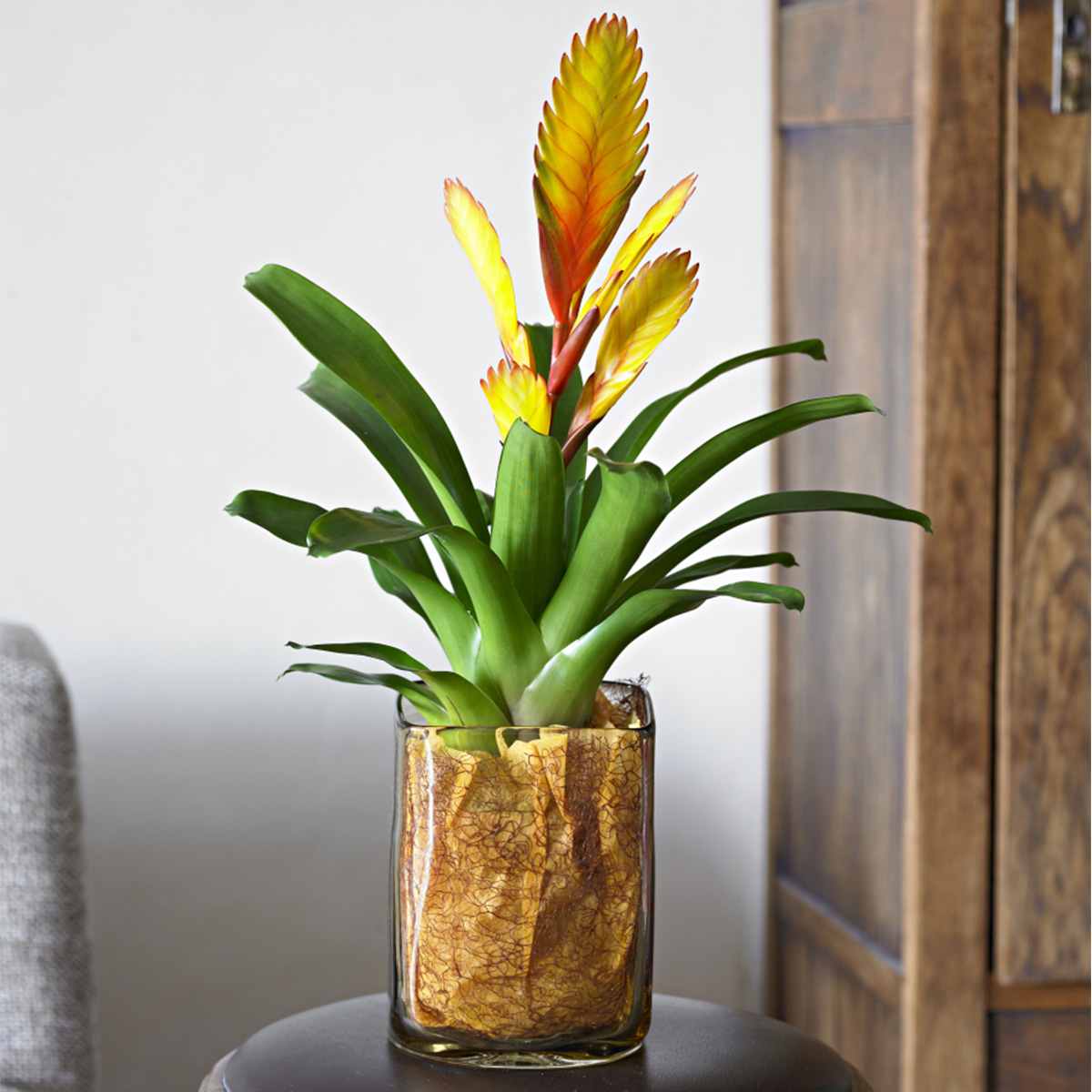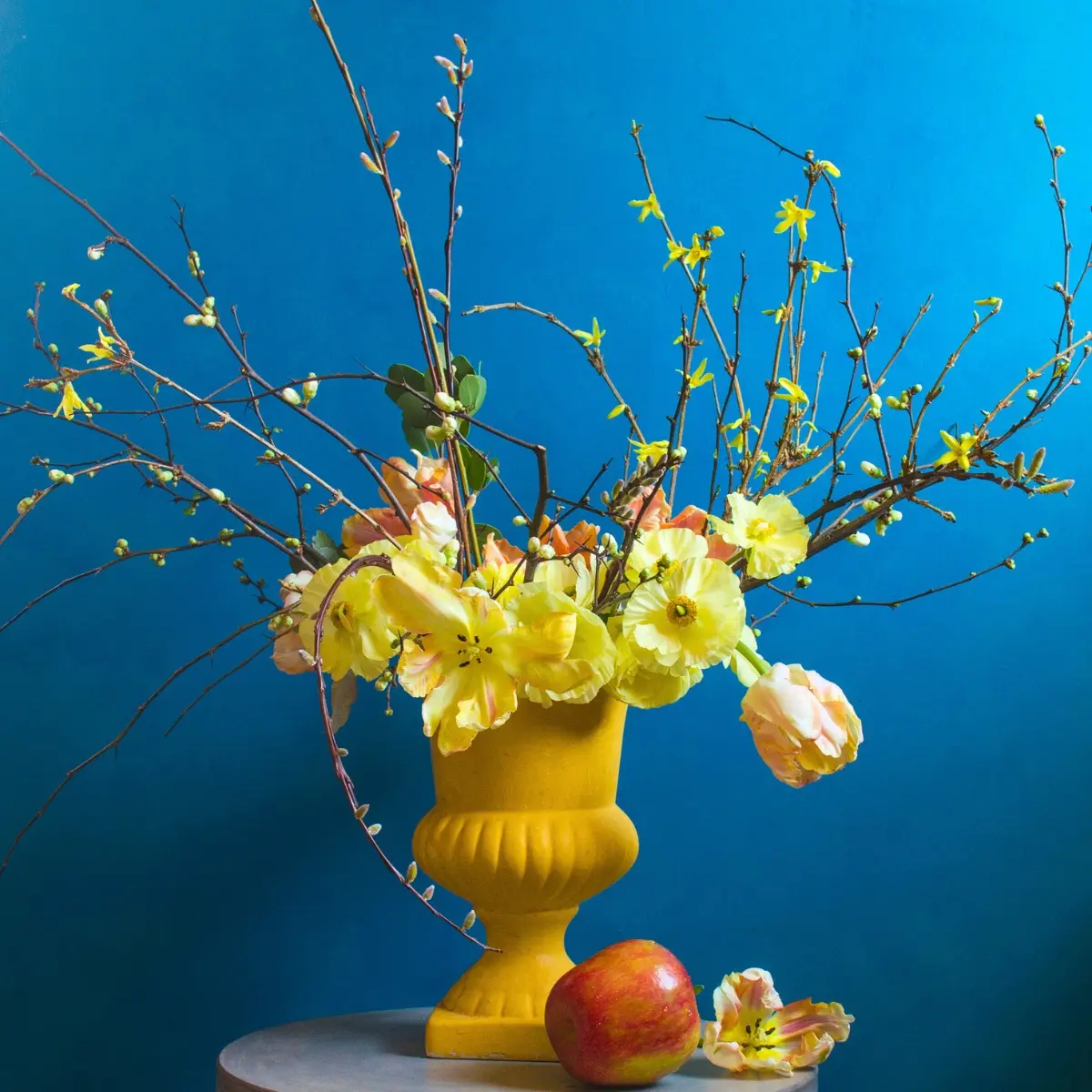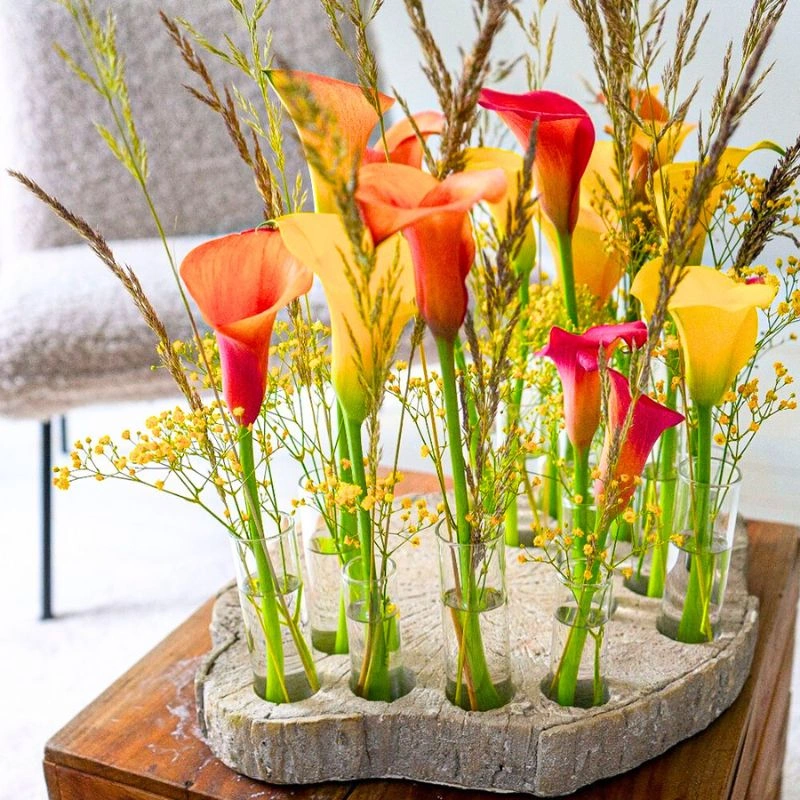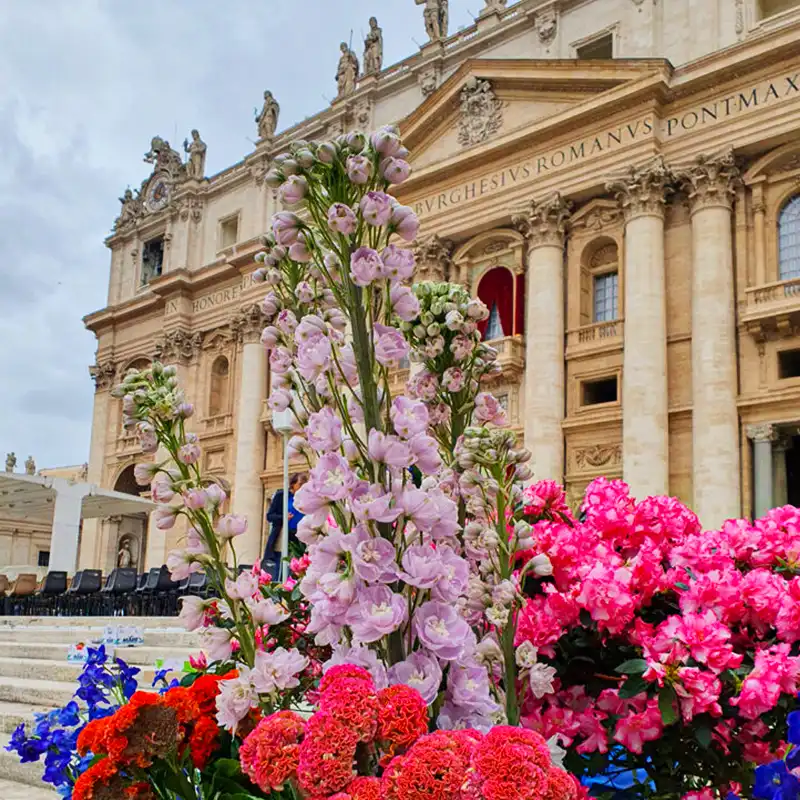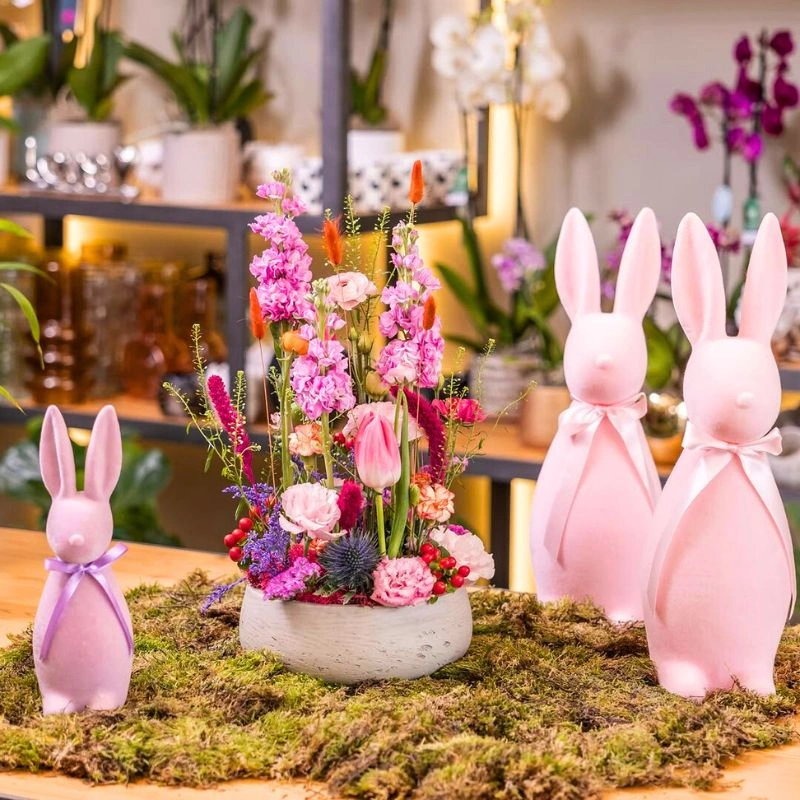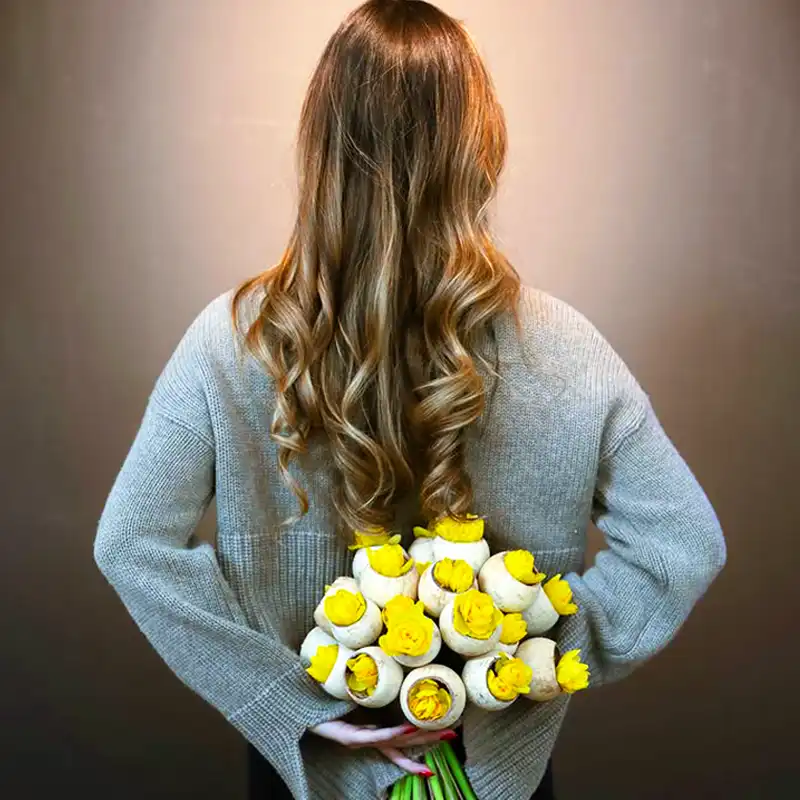Spring has sprung, so why not get your sparkling yellow bromeliads that will brighten up your Easter with a burst of energy and color. In Brazil, where this plant grows in the wild, the bromeliad is known as the 'Living Fiesta'. The Latina of houseplants is flamboyant, upbeat and resilient. What's more, you'll find that she vastly improves the air quality at home. Yellow Bromelias are the perfect way to celebrate Easter. Their bright yellow petals and unique shape make them a standout addition for your interior as a plant, or, as a cut-flower to any flower arrangement. Not only are they beautiful, but they also carry a special significance. Yellow Bromelias symbolize renewal and rebirth, making them the perfect flowering plant for this time of year.
Common Names:
- Golden Bromeliad
- Living Fiesta
- Yellow Pineapple
Yellow Bromelias: Origins and Significance
Bromelias are native to tropical regions of the Americas, and there are over 3,000 species in the Bromeliaceae family, and they are all quite diverse. From fiery temptresses to more sophisticated splendor. There are varieties with flamboyant colors but the family also has less incandescent colors for connoisseurs. The foliage and flowers have distinctive shapes and some have the most stunning veining. Bromeliads really are a design of mother nature. The yellow variety is particularly popular for its bright color and unique shape. The flower itself is actually a modified leaf called a bract, and the small flowers grow from the center of the bract.
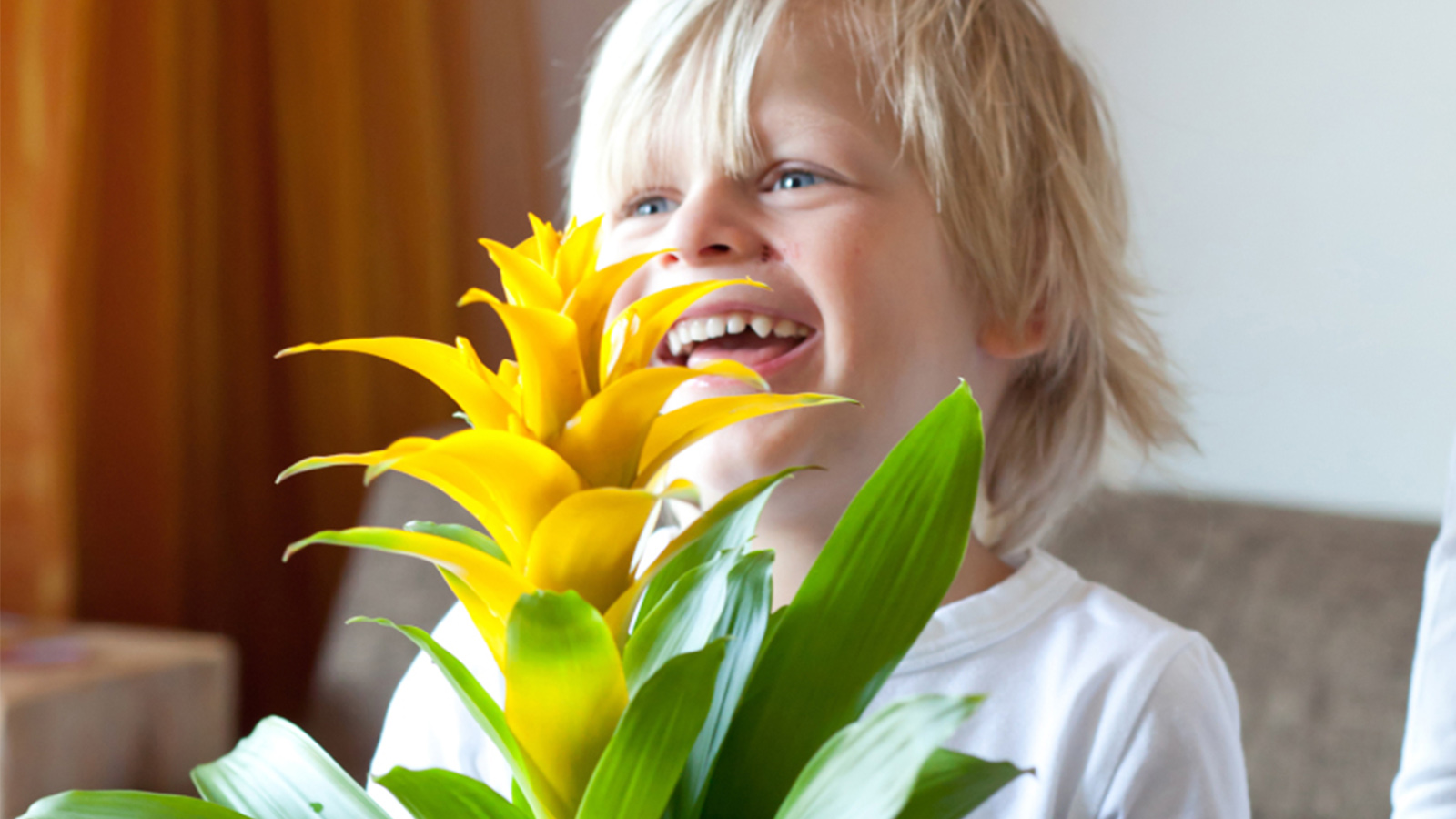
Yellow Bromelias are often used in Easter arrangements because they symbolize renewal and rebirth. The bright yellow color represents the sun and new life, making it a perfect addition to any Easter celebration.
Photos courtesy of www.bromelia.info
Bromelias: Perfect for Interiors and Tropical Climates
Bromelias are popular both as indoor and outdoor plants. They are particularly well-suited for tropical climates, where they can thrive in the high humidity and warm temperatures. But they can also be grown indoors as long as they receive enough light.
People love Bromelias for their unique shape and vibrant colors, as well as their low maintenance. They are easy to care for and can last for months without needing much attention. Because of this, they are sold all over the world and are a popular choice for both casual gardeners and serious plant enthusiasts.
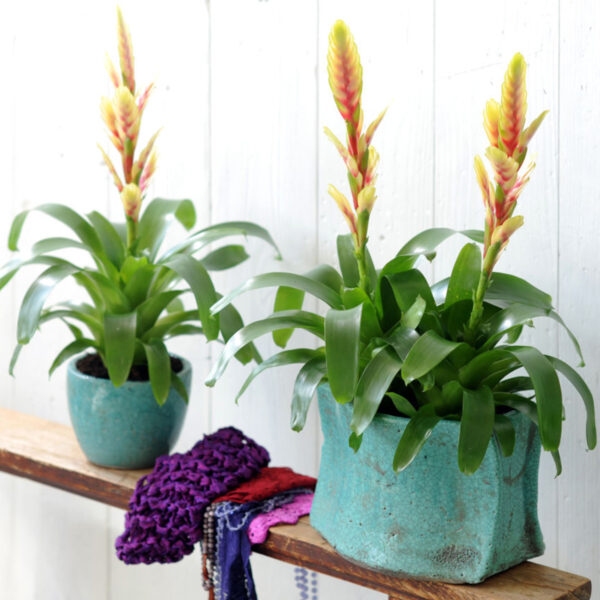
Yellow Bromelias Care: Keeping Your Plant Healthy
A bromeliad will bloom three to six months. And it doesn't require a lot of care. In fact, Bromeliads are very easy-going. At www.bromelia.info you will find out how you can pamper your bromelia and brighten up your Easter. Compared to other plants, Bromelias are relatively easy to care for. However, there are a few things you need to keep in mind to ensure your plant stays healthy and vibrant.
Sunlight:
Bromelias need bright, indirect sunlight. Too much direct sunlight can burn the leaves, but too little will cause the plant to wilt. Place your Bromelia in a spot where it will receive plenty of light without being in direct sun.
Water:
Water your Bromelia by filling the central cup of the plant with water. Make sure to change the water every few days to prevent bacteria from growing. If you are growing your Bromelia indoors, you may need to mist the leaves occasionally to maintain the right level of humidity.
Humidity:
Bromelias prefer high humidity, so if you live in a dry climate, you may need to take steps to increase the humidity around your plant. You can do this by misting the leaves, placing a tray of water nearby, or using a humidifier.
Temperature:
Bromelias prefer temperatures between 60 and 80 degrees Fahrenheit. They can tolerate slightly cooler temperatures, but avoid exposing them to temperatures below 40 degrees Fahrenheit as this can cause damage to the plant.
Soil:
Bromelias prefer a well-draining soil mix that is slightly acidic. A mixture of peat moss, perlite, and orchid bark can provide the right balance of nutrients and drainage for your plant. Avoid using heavy or clay soils, as these can retain too much moisture and lead to root rot.
Propagation:
Bromelias can be propagated by removing the offsets, or "pups," that grow at the base of the plant. Wait until the pup is at least one-third the size of the parent plant before removing it. Use a sharp, sterile knife to cut the pup away from the parent plant, and plant it in a well-draining soil mix. Keep the soil moist and provide bright, indirect light until the pup is well-established.
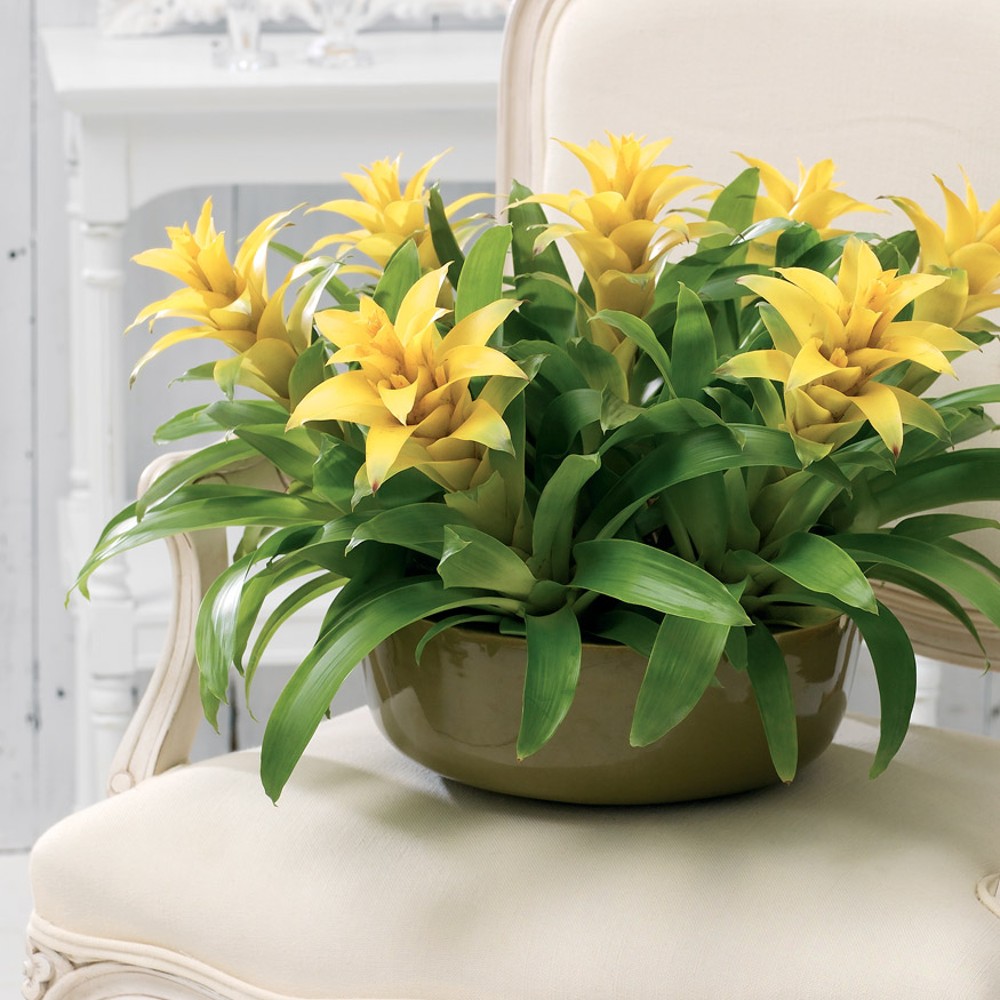
Common Problems and Pests:
One common problem with Bromelias is the buildup of salt and minerals in the central cup of the plant. This can lead to discoloration and damage to the leaves. To prevent this, flush the cup with clean water every few weeks. Another issue is root rot, which can occur if the plant is overwatered or if the soil does not drain properly. If you notice wilting or yellowing leaves, check the soil moisture and adjust your watering schedule accordingly. Finally, watch out for pests like mealybugs and spider mites, which can be treated with insecticidal soap or neem oil.
Yellow Bromelias are a stunning addition to any Easter celebration, and with proper care, they can last for months. By following these simple tips, you can keep your Bromelia healthy and vibrant for years to come.


